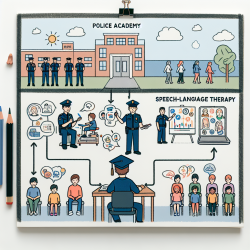Introduction
As practitioners dedicated to the well-being and development of children, it's crucial to understand the role of school policies in shaping physical activity (PA) outcomes. A recent study titled A natural experiment to assess recess frequency on children’s physical activity in Arizona (U.S.) elementary schools sheds light on the impact of recess frequency on children's PA levels. This blog explores how these findings can guide practitioners in advocating for policy changes that enhance children's health and learning experiences.
The Study: A Closer Look
The study conducted in Arizona elementary schools provides compelling evidence that increasing recess frequency significantly boosts children's moderate-to-vigorous physical activity (MVPA) and reduces sedentary time. Schools complying with the state policy mandating two or more daily recesses showed that students spent an additional 5.1 minutes in MVPA based on direct observation and 9.5 minutes based on accelerometry, compared to schools with fewer recess periods.
Implications for Practitioners
For practitioners, these findings underscore the importance of advocating for school policies that prioritize physical activity. Here are actionable steps practitioners can take:
- Advocate for Policy Change: Encourage schools and districts to adopt policies mandating multiple daily recess periods. Highlight the data-driven benefits of increased MVPA and reduced sedentary behavior.
- Collaborate with Educators: Work with teachers and school administrators to integrate physical activity into the daily schedule. Emphasize how increased PA can enhance cognitive function and academic performance.
- Educate Parents and Community: Share research findings with parents and community stakeholders to build support for policy changes. Use data to illustrate the long-term health benefits for children.
Encouraging Further Research
While the study provides valuable insights, it also highlights the need for further research. Practitioners can contribute by:
- Conducting Local Studies: Partner with local schools to replicate the study and gather data specific to your community. This localized data can strengthen advocacy efforts.
- Exploring Additional Variables: Investigate other factors that may influence PA levels, such as playground design, equipment availability, and organized activities.
- Assessing Long-term Outcomes: Study the long-term impact of increased recess frequency on children's health, academic performance, and social development.
Conclusion
The findings from the Arizona study offer a compelling case for increasing recess frequency in schools. By advocating for data-driven policy changes and engaging in further research, practitioners can play a pivotal role in enhancing children's physical activity, health, and overall development. Let's work together to create school environments that support active, healthy, and thriving children.
To read the original research paper, please follow this link: A natural experiment to assess recess frequency on children’s physical activity in Arizona (U.S.) elementary schools.










